On the Cusp of the Next Chapter 9×7 Monotype with colored pencil
Available on Etsy
(Process shots begin at the bottom of this post.)
With my reference photo (an iphone snapshot of one of my nieces, taken with the instamatic filter) nearby, I’m using colored pencils to refine the young girl’s features, and I’m adding some darker areas in my imaginary hedge behind her.
Soaked and blotted heavy weight Arches cover paper is laid on top of the plexiglass with the painting face up, and then newsprint is laid on top of the Arches paper to protect the press blankets from any bleed through or staining from the pigments. After a trip through the press, the monotype is pulled from the plexiglass plate.
This is a beveled plexiglass plate with an under-drawing done in water-soluble crayons. I’m adding watercolor here; the crayons give the watercolor something to cling to, which keeps the wet pigments from repelling the slick plexi surface and pooling in little piles like water on glass. You still get quite a bit of that, but less so when you lay the crayons in first – and the pooling is a good thing because it keeps the image less fussy – and encourages insists upon a more painterly approach.
P.S. I have more to write about Weekend with the Masters, but will have to share on another blog post. 🙂
Art Quote
In 1894, Whistler exhibited three small marines, which he had painted off-shore while the boatman steadied his boat. They were fresh and crisp – so good that a great painter of marines said of them in an exhibition: “They over-topped everything about them.” Two were sold and he showed a third to an American who came to the studio. The caller said at once he would be only too glad to take it at price named; the matter was apparently closed, and the buyer sailed for home, leaving a friend to get the picture. A day or two after, Whistler stood looking long and earnestly at the little marine, saying half to himself: “It is good, isn’t it?” Then he took the canvas from the frame and said “I think it needs touching up a little.” Another pause, then “Do you know, I believe I won’t let this go just yet. I want to go over it once more. I can send your friend something else next winter – something that he might like better. And if he doesn’t like it, why, he can return it.” “But, Mr. Whistler, he wants this little marine. There is not much to do upon it, is there?” “Nooo-o; but, then, you see….” “Well, why not give it the last touches now, and let him have it. If you do not send him this, I am afraid he will never have one of your pictures.” “Oh, yes he will – next winter…” “But, next winter others will come in when we are not here, and buy from you whatever you have'” “Well, we will see.” And only persistent urgings, day after day, even after a draft on London had been forced upon him, induced him to ship the painting. At no time was there any question of price or money involved; he simply didn’t wish to part with the last of his three marines. It was not until about 1890, and after, that Whistler’s paintings began to sell at anything like their real worth. To his credit be it said, his work was never “popular”. By his independence, his seeming defiance of all conventional and academic notions in his art, his eccentricities, and his lack of commercial instincts, he managed, at a very early period in his career, to alienate: Dealers, Painters and the Public… the three factors upon which commercial success depends.
~Recollections and impressions of James A. McNeill Whistler by Jerome Eddy 1903

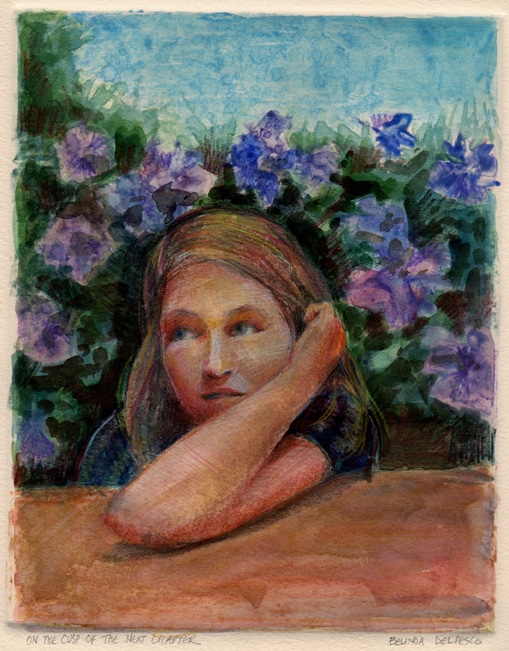
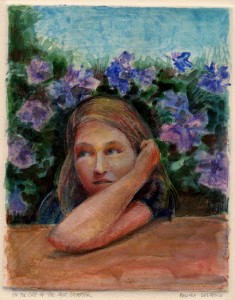
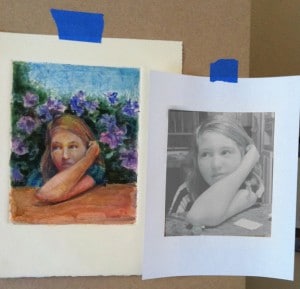
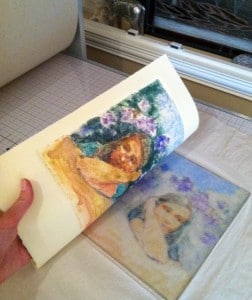
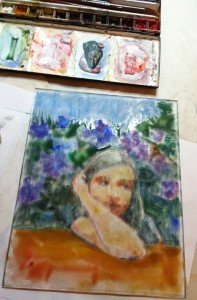
A beautiful, beautiful monoprint. Someday when I am smarter (and have a press) I will come back to study the steps on this post. I enjoyed the Whistler story too.
She is absolutely lovely Belinda.